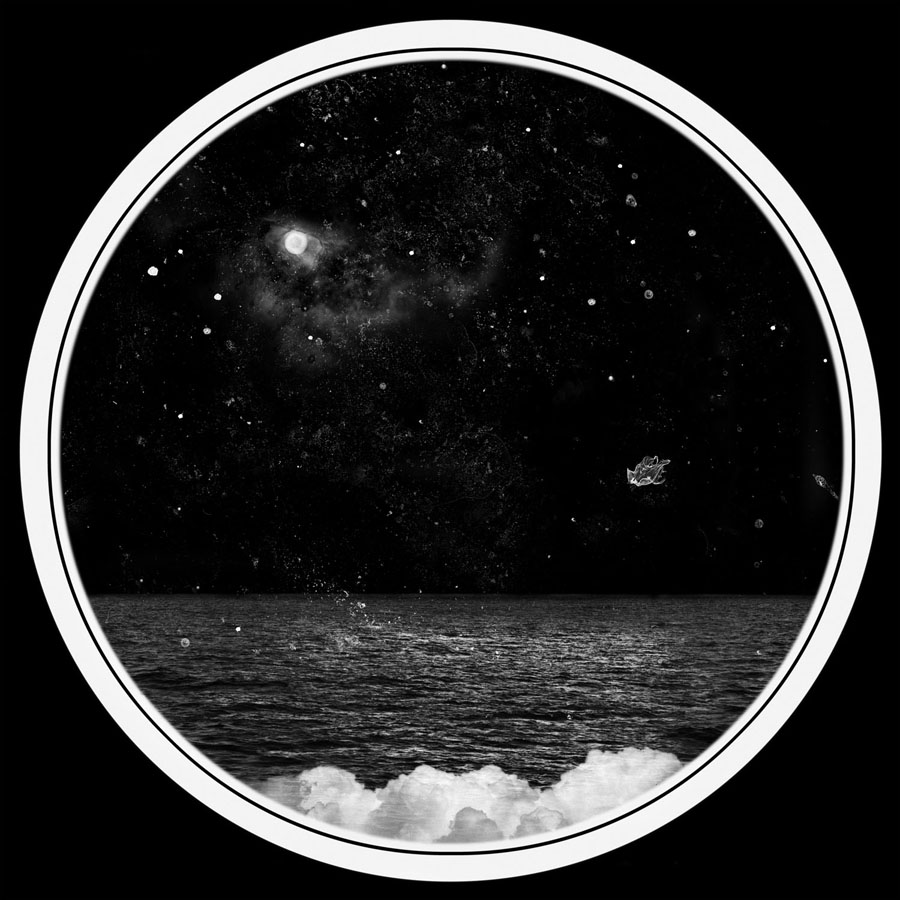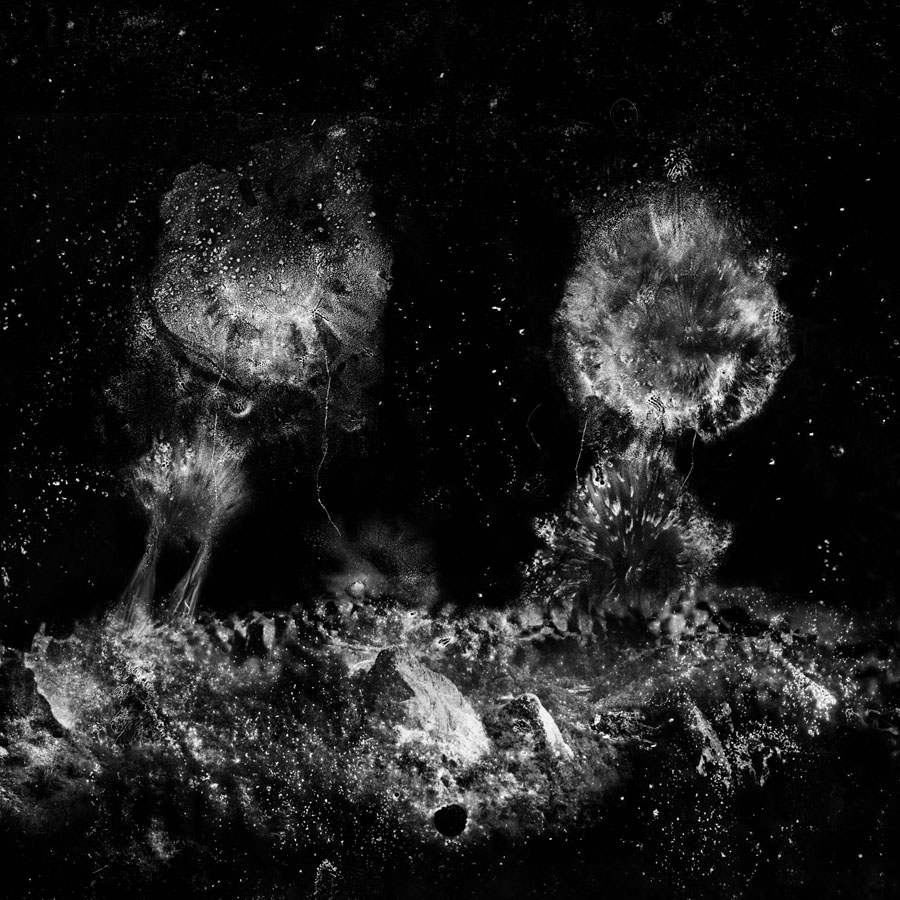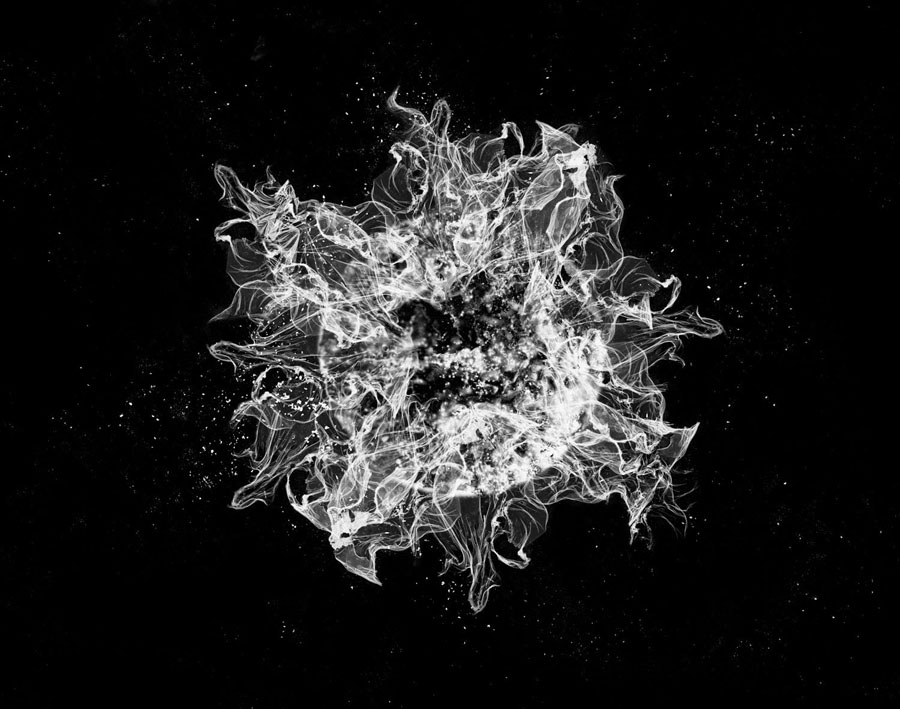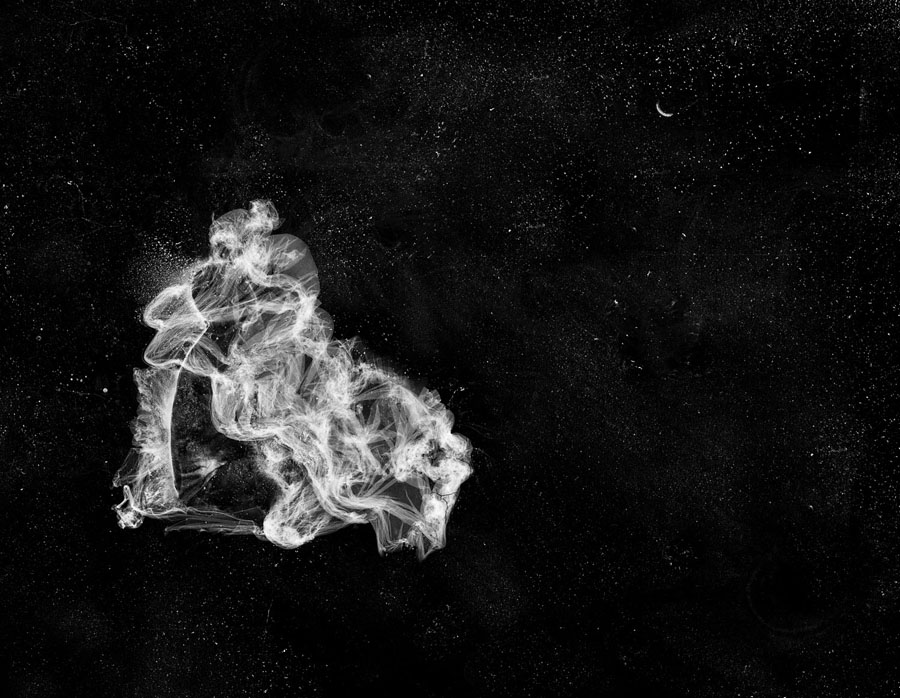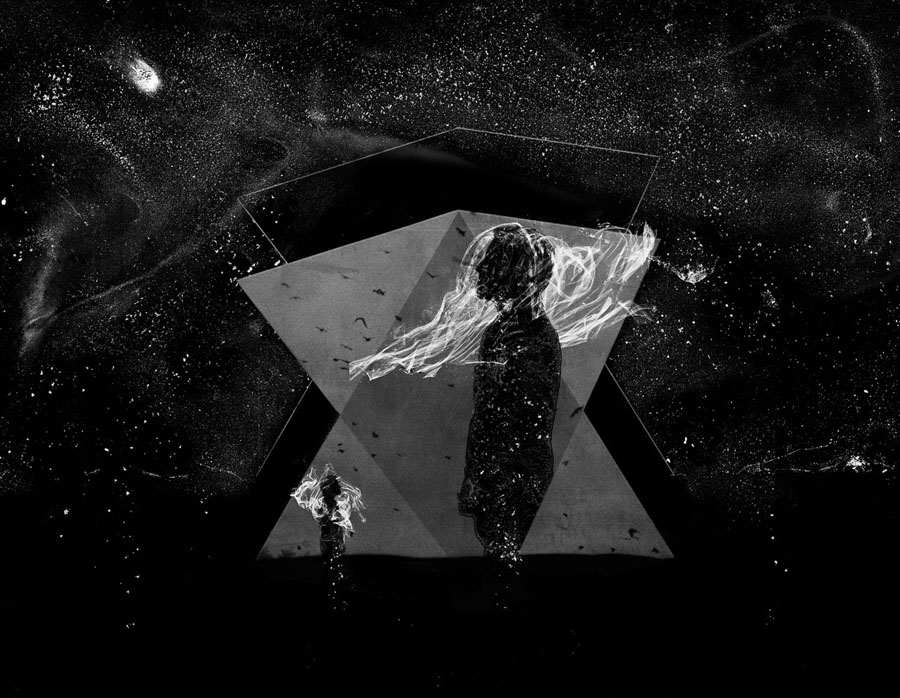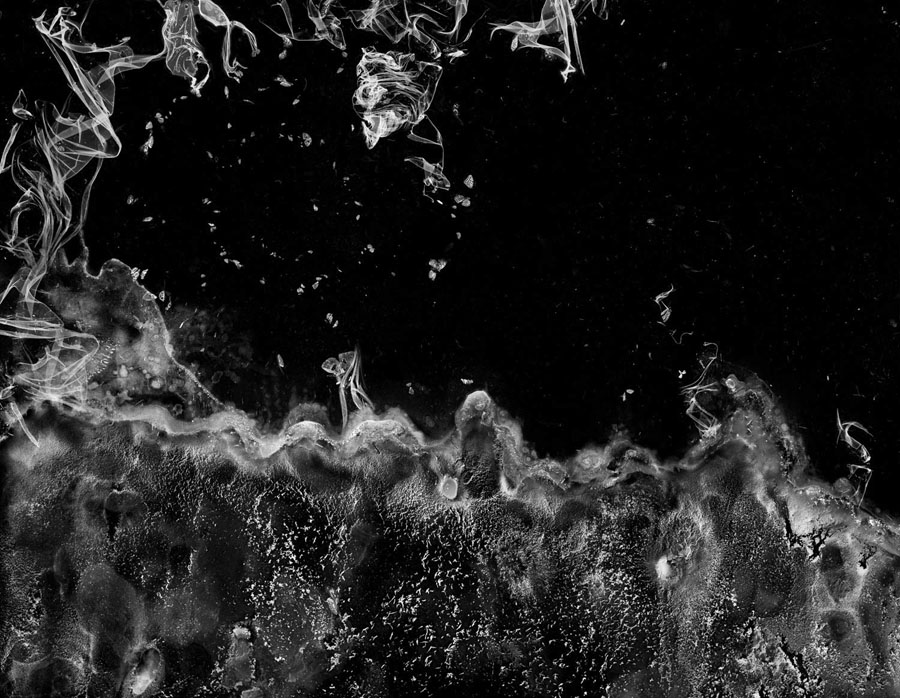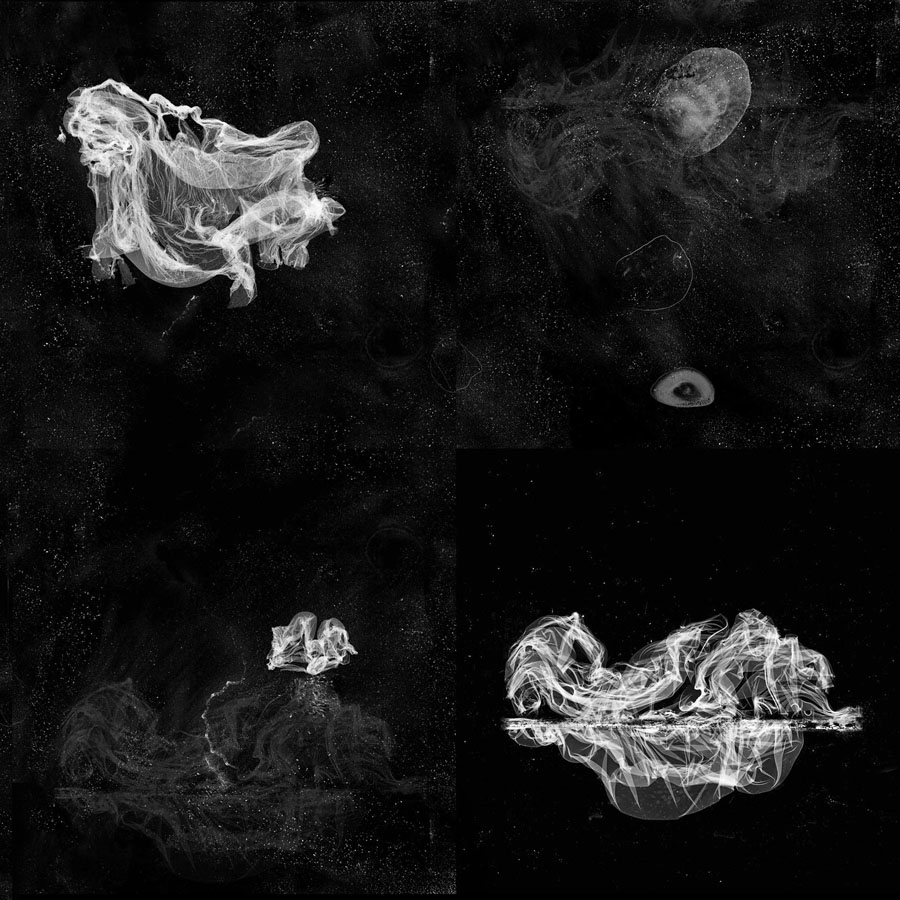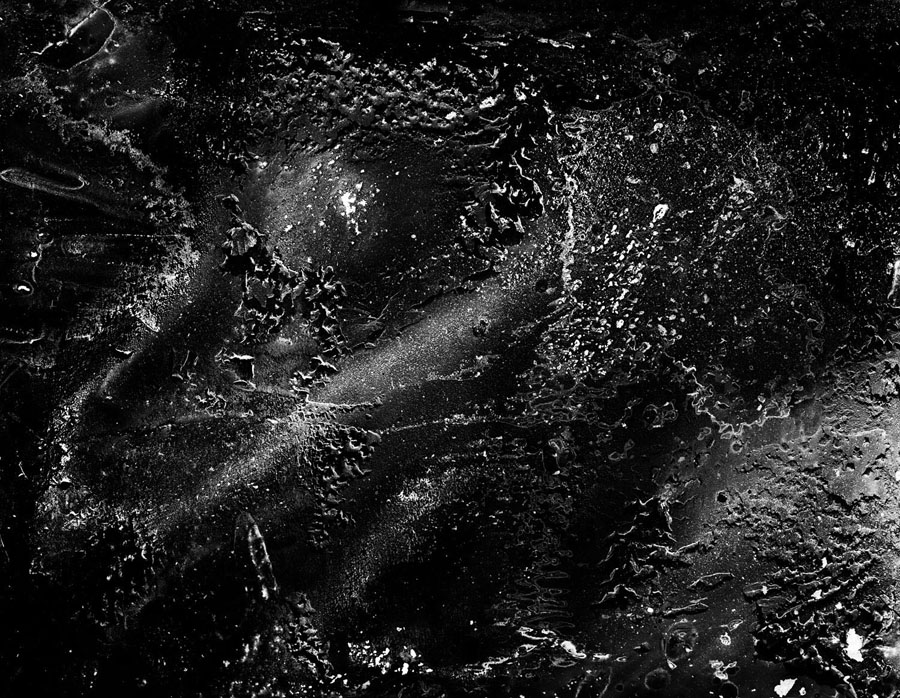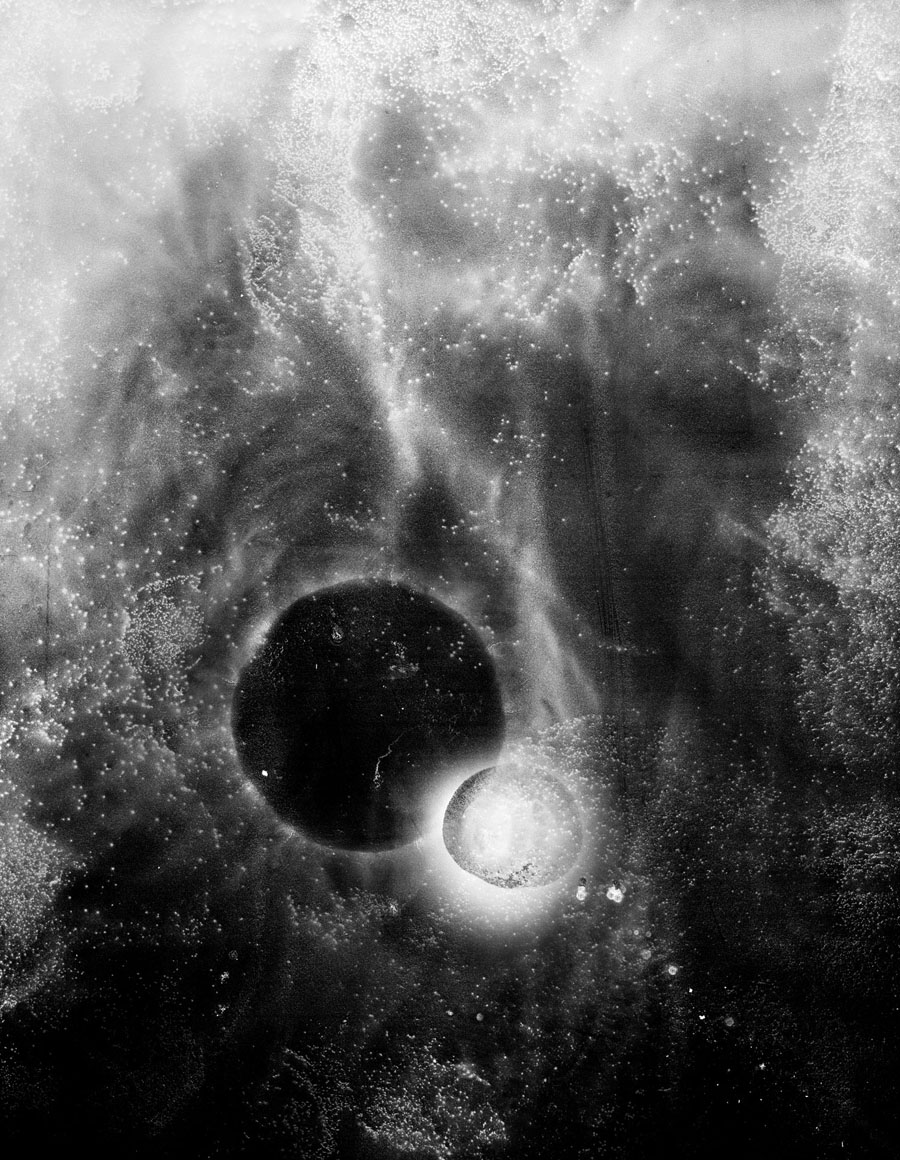Saw The Splendour is inspired by worlds in both biology and astronomy and the narratives that are created by discoveries in both sciences. Black and white 4×5 negatives were manipulated with chemistry and a variety of tools (dental, jewellery making, make up pads, knives etc) in petri dishes and on glass plates. The photographs are studio constructions, where layers of black and white emulsion are chemically lifted, collaged with then sculpted and repositioned before the photograph is printed in a traditional wet darkroom.
Like simultaneously looking through a telescope and microscope, these uncanny images shape-shift before our eyes between expanses of deep space and microscopic views of molecules. Although they are inspired by physics, biology and science fiction, the photographs in Saw the Splendour are comparatively low-fi. These imaginary landscapes blend analog photography and collage to create images in which the largest astral formation mirrors the smallest cellular structure. There is wonder to be found in this simple, overarching premise, and in the photographic worlds presented to be explored.
The photographs in Saw the Splendour are meticulous products of alternate-process photography masquerading as documentation of the natural world, yet falling somewhere between reality and a lucid dream. The exhibition title is a nod to this eerie and gorgeous sensation that the key to the mysteries of our universe is within reach, a tingling attainable energy that hovers at our fingertips. Jellyfish, the life cycle of stars, Le Petite Prince, old maps, the ideas of future exploration and time travel, cartographers, and antique drawings of the cosmos all had a role in inspiring the work and final results of Saw the Splendour.



